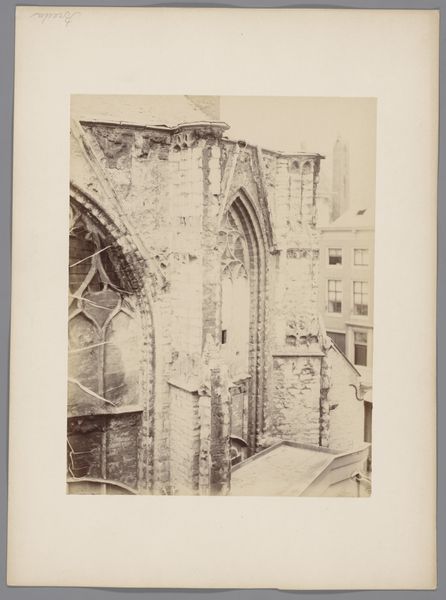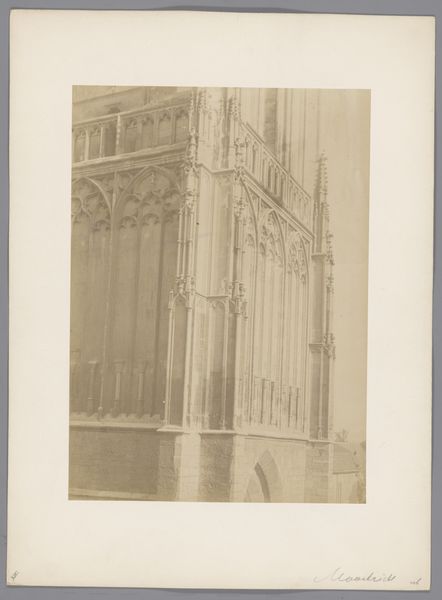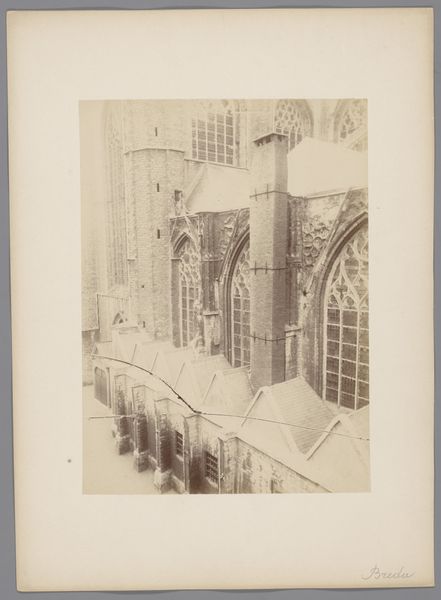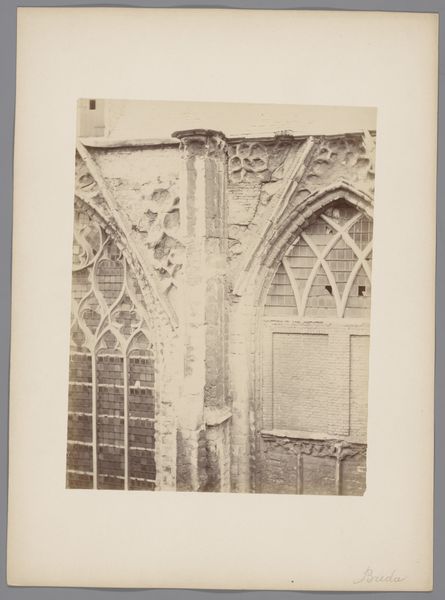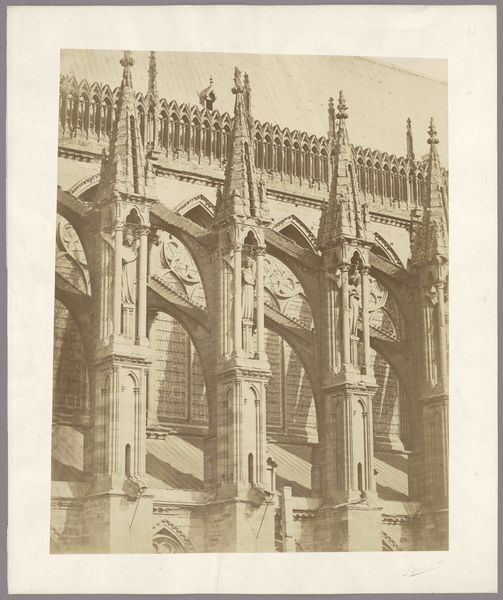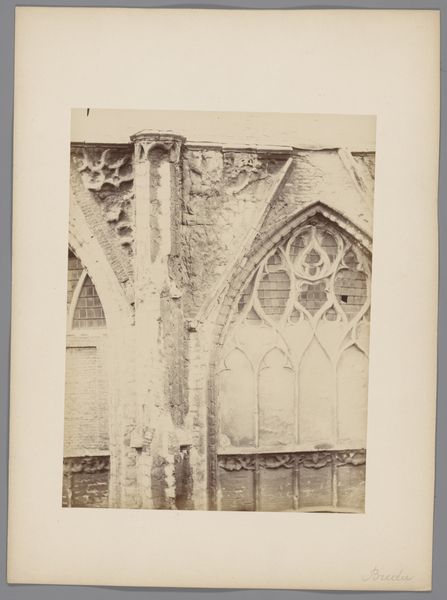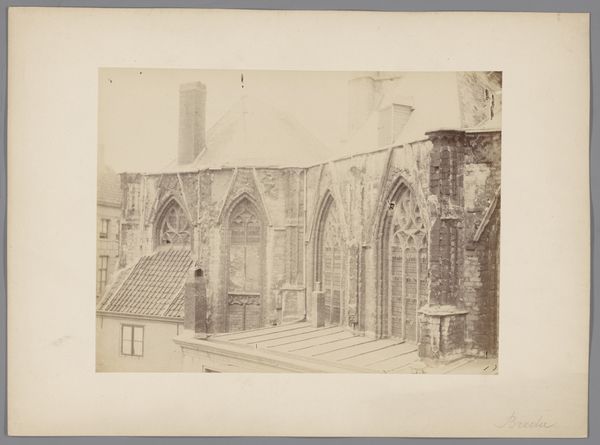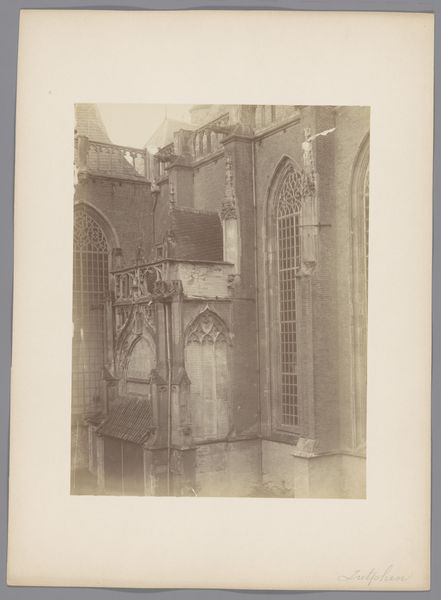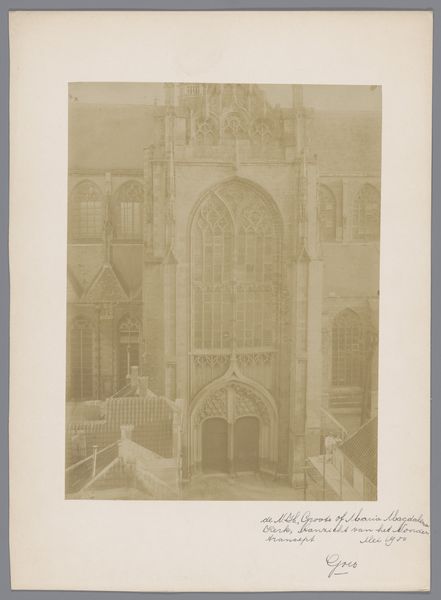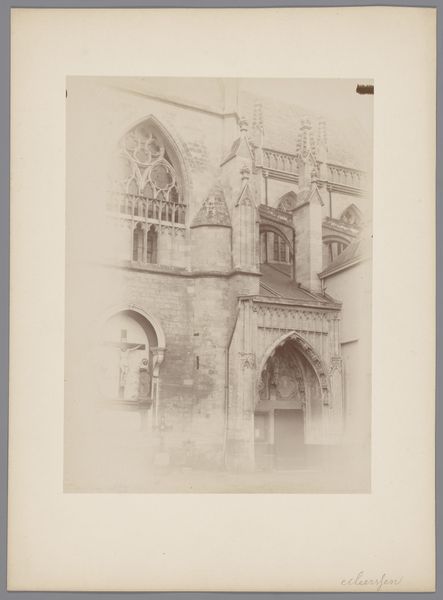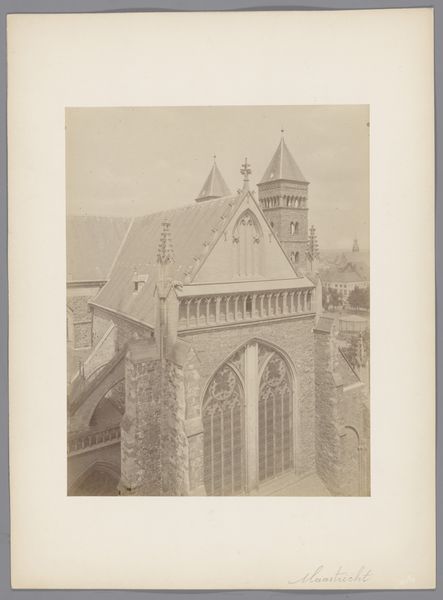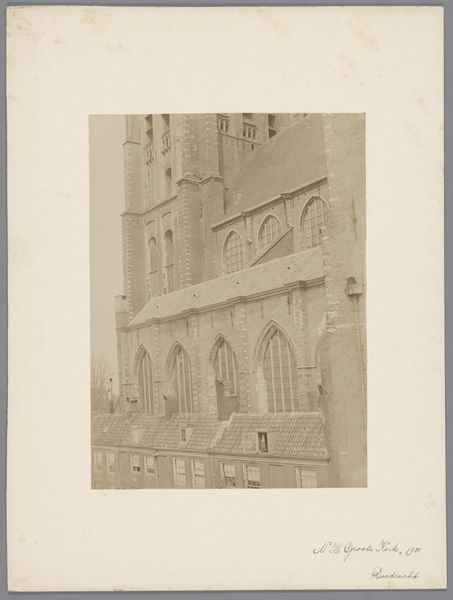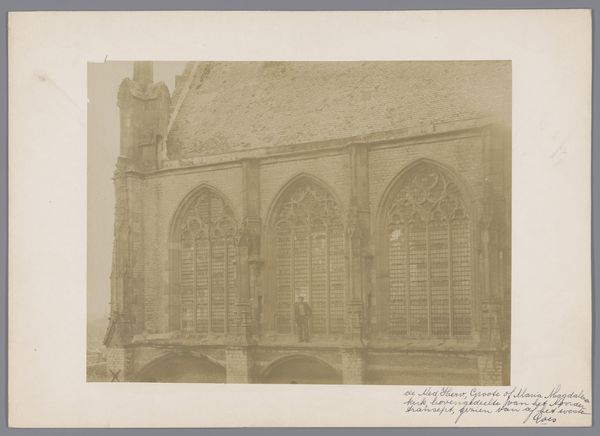
Dimensions: height 233 mm, width 170 mm
Copyright: Rijks Museum: Open Domain
Editor: We're looking at an intriguing image, simply titled "Grote Kerk te Breda," dating roughly from 1890 to 1920, author unknown. The sepia tones give it a sense of aged grandeur, and the upward angle emphasizes the building's height and complex architecture. How do you approach a piece like this from a formal perspective? Curator: The photograph presents a compelling study in contrasts. Note the severe geometry of the architecture juxtaposed with the soft focus of the lens. The anonymous photographer uses light to articulate form, carefully modeling the surface of the stone. The receding lines of the rooftop and buttresses create depth, yes, but consider how the eye is consistently drawn back to the textured surface itself. Editor: So, the focus isn't so much on what the building *represents,* but rather how it is *presented* visually? Curator: Precisely. Consider the tonality: the subtle gradations of gray emphasize the materiality of the stone. The composition avoids clear symbolism, instead creating visual interest through texture and spatial relationships. We can deconstruct this image into formal elements – line, tone, texture, composition – and appreciate it without recourse to historical context. How might different lighting conditions affect the viewer's reading? Editor: That's interesting! I hadn't considered how much the lighting influences our perception of texture. Thinking about this photograph formally really spotlights how much intention is involved, even in something that seems like a straightforward architectural study. Curator: Exactly. By attending to the intrinsic qualities of the image, we come closer to understanding the photographer's compositional choices, rather than being swayed by potential symbolism. The beauty lies in the arrangement and execution of form. Editor: Thank you, this has helped me learn new methods for approaching architectural photography.
Comments
No comments
Be the first to comment and join the conversation on the ultimate creative platform.
